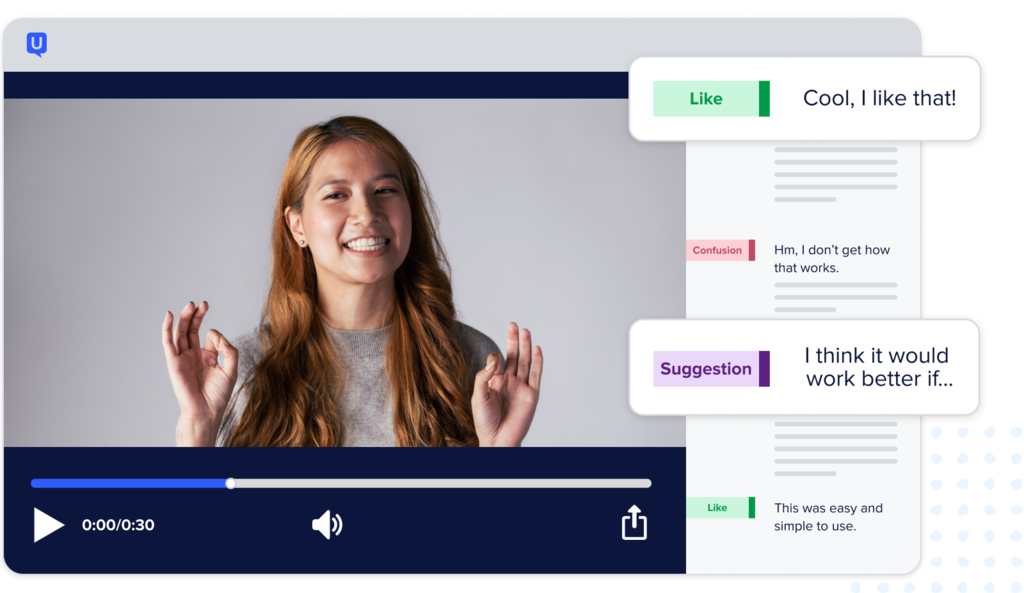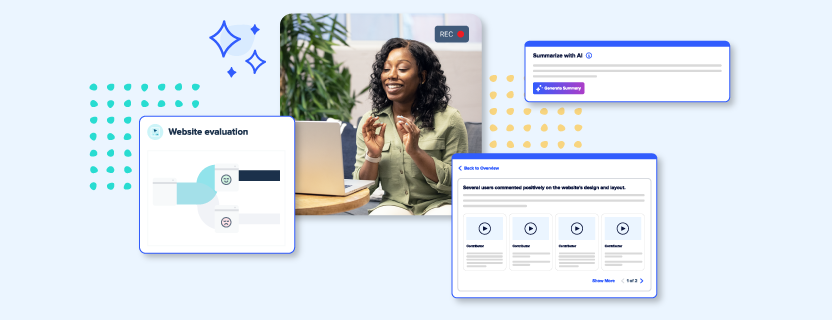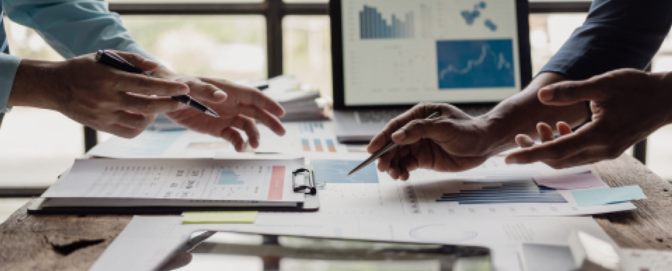
How to get customer feedback without negatively impacting CX

Creating a great customer experience (CX) and fostering a customer-centric culture requires one important detail—your customers. Saying and believing that you care about your customers is nice, but it does little to impact your CX. When we talk to professionals about building a customer-centric culture or elevating their CX, we often ask them, how do they get customer feedback today? Are they relying on third-party review sites? Do they implore customers to stay on the line after a support call? What about email surveys?
It’s easy to feel overwhelmed with all the customer feedback methods available to get customer feedback, and some methods are better than others at impacting the customer experience.
In this article, we’ll go through the various ways to get customer feedback, highlight the pros and cons of each, and discuss which ones have the biggest impact on your CX.
Methods for collecting user feedback
Creating a standout customer experience hinges on really knowing what your customers think. To gauge this, you could use various methods to gather customer feedback, each with its own set of strengths and weaknesses. We’ll look at all of these in-depth in this article, but here’s a quick check-list of key methods for collecting customer feedback:
- Emails: Send follow-up emails post-interaction for feedback. This can be automated but may lack a personal touch and might not always get a response. It's simple and low-cost but relies on customers making the effort to reply.
- Surveys: Implement surveys, like CSAT, to get quick feedback with a rating scale. They're easy for customers but can be biased and might not always garner responses.
- Focus groups: Have moderated discussions with small groups for in-depth feedback. They provide rich, nuanced insights but can be expensive and time-consuming, with risks of groupthink or dominance by strong personalities.
- Digital channels: Monitor social media and other digital platforms for unsolicited feedback. This offers raw, honest insights but can be emotionally charged and challenging to quantify.
- UserTesting: Utilize platforms (including UserTesting) for rapid, qualitative feedback through remote testing or live interviews. Video feedback is impactful but requires a subscription, making it a resource commitment.
Each of these methods can contribute significantly to your CX when chosen and implemented thoughtfully.
What is customer feedback?
Customer feedback consists of the experiences, perspectives, feelings, and problems shared by the community that you serve with your products and services.
When customer feedback is done right, it’s the north star for your company. Customer-centric companies take customer feedback and use it to empathize with customers and make meaningful changes to their CX, which is a lot harder than it sounds.
According to Adobe's 2023 Digital Trends Report only 1 in 5 companies, that consider their CX to be mainstream, responded that they have “significant insight” into their customer’s mindset or friction points in the customer journey. Luckily, getting customer feedback can give you insight into these kinds of details.
Why is customer feedback important?
Customer feedback is important because your customers are important and there’s an ROI to knowing your audience. While no company would argue against the importance of their customers, there’s a real gap between how companies think they’re doing and how their customers feel.
This persistent disconnect—known as the experience gap—arises from common issues such as a lack of timely customer feedback, internal misalignment, and a fundamental misunderstanding of user needs. While 87% of companies believe they deliver exceptional customer experiences, only 11% of customers agree.
That’s more than a misunderstanding between parties. It’s a huge opportunity for businesses to reconnect with their customers. Closing this gap is essential—especially as companies that lead in customer experience grow their value at five times the rate of their peers.
What does bridging the experience gap mean for companies that choose to put in the effort?
It means big results. According to Gallop, companies that decipher and manage customer emotions effectively can outperform their peers by 85% in sales growth and more than 25% in gross margin.
While increased revenue is great and all, there are additional benefits to connecting with your customers according to Forrester, such as:
- Improved impact of feedback: When customer feedback helps to create empathy and people start to see results, the proven business value will increase the need and desire for more feedback.
- Fostering a culture of customer empathy: Spreading the influence of customer feedback enables customer insights to reach more of the organization. More functional areas and different levels of business stakeholders are clued into customer needs and desire to strengthen the overall culture of customer empathy.
- Increasing customer satisfaction: Customer loyalty is a byproduct of increased customer satisfaction. Customers have better experiences when their insights and feedback are taken into consideration and put into action. As a result, customer satisfaction scores improve.
- Faster time-to-market: With customer feedback successes, decision-makers can see the business value for products and services earlier than they would have without it.
Now that we’ve shown you what customer feedback is and why it’s so important, let’s go in-depth on the methods to get customer feedback.
5 ways to get customer feedback
How do you ask for feedback from customers? When you ask customers for feedback, meet them where they are. Offer them multiple methods of leaving feedback so that they can choose the method that works best for them at the time when it’s most convenient.
However, when you ask for feedback and how you ask for it will depend on what kind of feedback you’re looking to collect. Whether it’s Net Promoter Score (NPS), which measures loyalty, or customer satisfaction (CSAT), which measures whether your company is meeting customer expectations, the type of feedback will justify the means.
Here are five methods of obtaining feedback from customers:
1. Email and customer contact forms
One popular and easy method for getting customer feedback is through follow-up emails. While you can easily automate this, having a person reach out is even better.
Pros: automated and affordable
After a transaction, meeting, or various touchpoints, have a real person reach out directly to your customer for feedback and let them know that you’re always there to chat. This is the perfect job for a customer manager to dig deeper into what the customer is really going through and whether your product is meeting their needs.
Cons: response not guaranteed, 1:1 response
However, composing an email reply may be more work than your customer is willing to commit. In follow-up emails, it’s a good idea to offer a phone number and let the customer know you’re always available to chat about it. A phone number also gives customers a way to contact you immediately if there’s an issue.
Impact on CX:
While getting customer feedback through email won’t impact your overall CX, it can deeply impact an individual’s experience.
2. Create a dedicated customer feedback survey
Customer surveys can take many forms. One of the most commonly used types is customer satisfaction (CSAT) surveys, which use a Likert rating scale to assess whether or not you’re meeting customer expectations.
To calculate your CSAT score, count the responses rated 4 (satisfied) and 5 (very satisfied). Divide them by the number of survey responses and then multiply it by 100 to get a percentage score.
For example: (90) satisfied and very satisfied customers / (100) total survey responses x 100 = % of satisfied customers. You have 90% customer satisfaction.
Pros: easy for customers
Surveying customer satisfaction requires asking one question. It doesn’t require much effort on part of the customer and it can be conducted across a range of channels.
Cons: Subject to bias and response not guaranteed
CSAT surveys rely on customers to respond. Responses may be skewed depending on someone’s mood and situation. Responses are more likely to be very positive or very negative.
While a CSAT survey is fairly straightforward, there are many types of customer feedback surveys. Some can be difficult to create effectively if you’re not experienced in running quantitative studies. It's important to take time to learn how to conduct surveys and how to use surveys before you begin.
Impact on CX:
Survey data alone has little to no impact on your CX without context. A good starting point is to supplement quantitative data with qualitative research to understand “the why” behind your survey data. If your CSAT score drops from 90% to 70%, running qualitative studies could help you pinpoint why there’s been a drop in customer satisfaction.
Next, take those issues to stakeholders and have them addressed them to see if your score returns to normal.
3. Focus groups and user interviews
A focus group is a qualitative method of getting customer feedback that involves a small group of people who are guided through a discussion by a moderator. Focus groups are used to explore the needs, preferences, and priorities of a group of people.
Often used to complement quantitative research studies to get more context, focus group responses are typically open-ended and help get personal experiences or stories that can’t be found in data alone.
Pros: Responses can be clarified and expanded upon
Focus group moderators can probe responses for clarity and fill in any gaps in your research. Responses are rich with non-verbal cues, such as a long pause or a visual reluctance to answer.
Cons: Expensive, time-consuming, and subject to bias
While focus groups can give you rich and responsive feedback, recruiting can be time-consuming and expensive, especially for hard-to-reach audiences. The success of the focus group relies heavily on the skills of the moderator.
Analysis of the data can be complex and will depend on the skills of the note-taker. There’s also a risk that the focus group discussion will become polarizing, causing participants to take more extreme stances. Dominant personalities can overpower and steer the group’s responses. There’s also a risk of false consensus bias when some participants feel that have to agree with the group even when they don’t.
Impact on CX:
While focus groups can have a meaningful impact on your CX, the cost and difficulty of conducting in-person research make it harder to scale. From conception to analysis, the time-consuming nature of focus groups means that they can’t always keep up with the increasing speed of business.
4. Social media and online surveys

In some cases, customer feedback isn’t solicited. Digital channels like your social media accounts, websites, videos, and more are all great places to find feedback about your products and services. Typically, customer reviews and comments on social media are meant to help other prospective customers navigate their decision-making process. However, they’re equally useful for understanding customer perspectives.
Pros: Responses are honest and unsolicited
Comments and reviews left on your digital channels are often unsolicited, which can give you an unfiltered view of the thoughts of your customers. Use social media monitoring tools to get a birds-eye view of what your customers say and their sentiments.
Cons: Emotionally-charged, difficult to quantify
While comments and reviews left on your digital channels can be powerful, they’re often emotionally driven. People often take to these channels to complain or express issues with a problem or service in the heat of the moment. While they may be difficult to stomach, you’d be remiss to ignore them.
Impact on CX:
While not every comment or review will inspire action from your business, it’s important to keep tabs on what people are saying in public spaces. Never underestimate the power of customer reviews and comments on social media. Good or bad, they help potential customers form educated opinions about your product, service, or experience.
Moreover, they help build trust and authority for your brand. Engagement is key when getting customer feedback from digital channels. People are generally good at ciphering out legitimate concerns, but what they’re paying attention to most is are you engaged and responding empathetically?
5. Customer feedback through UserTesting

UserTesting offers the Human Insight Platform—get actionable, qualitative feedback through remote methods in just a few hours via:
Unmoderated testing:
A customer feedback platform can help you automate getting customer feedback with unmoderated tests. You can test using your customers or leverage UserTesting’s Participant Network. Your customers will get a list of tasks to perform on their own while their screen and voice are being recorded. When they’re done, you receive the results in the form of a video with access to accurate transcripts, more intelligent insights, and machine-powered visualizations.
Live interviews:
Conduct in-depth conversations with a customer or UserTesting Participant Network using zoom. Live interviews allow you to connect in real-time and enjoy two-way interactive video conversations that allow you to easily observe non-verbal cues and ask follow-up questions as you would in person. Afterward, enjoy the same intelligent insights and machine powers visualizations as with unmoderated tests.
Pros: fast and easy video feedback
Video-first feedback is deeply influential. Getting insightful, persuasive videos from your real customers or well-targeted participants will capture the attention of executives and stakeholders, which can have a huge impact on your CX.
Cons: requires a subscription
The Human Insight Platform is a subscription service. Since getting remote feedback can benefit the organization at large, many companies spread the subscription cost over multiple departments including marketing, HR, product, design, UX research, and more.
Impact on CX:
UserTesting’s remote video feedback platform can have a high impact on CX, especially when used with quantitative methods. Conversations with customers are not restricted by the time, cost, and geographic constraints as other qualitative methods. Plus, you can curate video feedback and share it with co-workers, executives, and stakeholders to leave a lasting impression.
Get customer feedback fast and at scale
Before deciding on which method is best for you and setting up the processes to get customer feedback, think about how it will eventually scale with your business.
What is the best way to get feedback? The best way to get customer feedback is the method that will scale with your organization and have a meaningful impact on your customer experience (CX). Your best option would be to incorporate a healthy mix of both quantitative and qualitative methods that account for the speed and type of customer insights that your business can easily leverage.
How can I get customer feedback fast? To get customer feedback fast, design a comprehensive customer feedback system. Offer several different ways for customers to tell you how they’re feeling. You’ll want to use quantitative methods to survey your customers broadly, and qualitative methods to drill down into their individual experiences. When you uncover a new issue or point of friction, doing something about it will impact your overall CX.

Get customer feedback you can use—today
Watch a demo to learn how you can get actionable insights from customers





